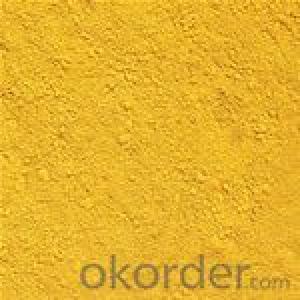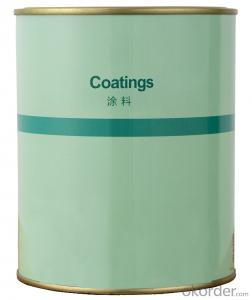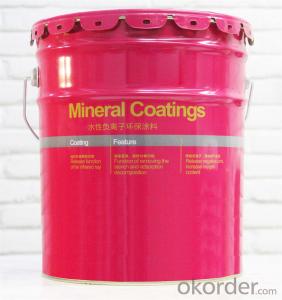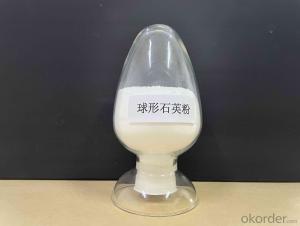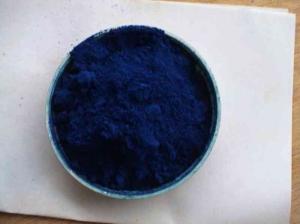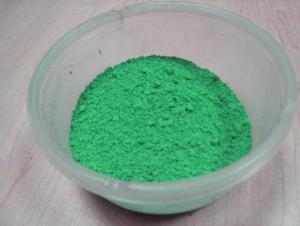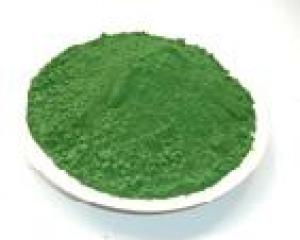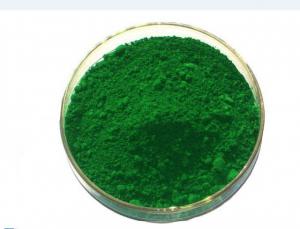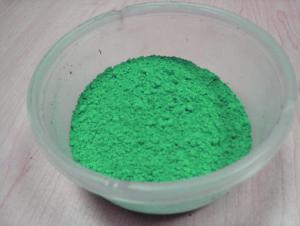iron oxide yellow pigment 313
- Loading Port:
- China Main Port
- Payment Terms:
- TT OR LC
- Min Order Qty:
- -
- Supply Capability:
- -
OKorder Service Pledge
OKorder Financial Service
You Might Also Like
Quick Details
· CAS No.: 51274-00-1
· Other Names: ferric oxide yellow
· MF: Fe2O3
· EINECS No.: 257-098-5
· Place of Origin: China (Mainland)
· Usage: Ceramic Pigments, Coating Pigment, Cosmetic Pigment, Ink Pigments, Plastic & Rubber Pigment, Leather Pigments, paint and coating
· Brand Name: Bright Sun
· Model Number: 313
· Type: Iron Oxide
· Style: Inorganic Pigment
· product: iron oxide yellow pigment 313
· type: iron oxide
· model: 313
· style: inorganic pigment
· color index: P.Y.42(77492)
· grade: industrial grade
· tinting strength: 95-105
· Process: wet method
· appearance: yellow powder
· Certificate: ISO9001
· Packaging & Delivery
Packaging Details: | 25kgs/bag(colored valve bag/craft paper compound bag/plastic woven bag lined with plastic film/); 500kg or 1000kg big bags; 12MT/20'FCL, on wooden pallet; iron oxide yellow pigment |
Delivery Detail: | Within 2weeks after receiving the deposit or L/C |
Specifications
1 iron oxide yellow powder
2 good covering ability and weather resistance
3 fine dispersion
4.20years factory
1. Properties:
Strong tingting strength, excellent coverage.
Good dispersion.
Good weatherability.
2. Specifications:
Item | Index |
Primary color |
|
Diluted color |
|
Iron content (Fe2O3) 105℃ drying%≥ | 86 |
Fineness (325 mesh wet sieve residue)%≤ | 0.3 |
Oil absorption, g/100g | 25-36 |
Moisture & 105℃ volatile% | 1.5 |
Water solubles% ≤ | 0.5 |
Water suspended matter PH value | 4-6 |
Relative tinting strength (compared with standard sample%) ≥ | 100± |
3. Application:
a. paint, coating, plastics, rubber, printing ink industries.
b. The construction materials: concrete, bricks, pavig-blocks, colorful tiles, ect.
4. Packing:
Net weight 25 kg in craft paper bag or knitting bag with plastic liner or as per clients' request. 13 MT/20'FCL
- Q:i also need the color they are links would be great if you know a good one
- Photosynthesis Pigments
- Q:what are accessory pigments?
- Accessory pigments are light-absorbing compounds, found in photosynthetic organisms, that work in conjunction with chlorophyll a. They include other forms of this pigment, such as chlorophyll b in green algal and higher plant , while other algae may contain chlorophyll c or d. In addition, there are many non-chlorophyll accessory pigments, such as carotenoids or phycobiliproteins which also absorb light and transfer that light energy to photosystem chlorophyll. Some of these accessory pigments, particularly the carotenoids, also serve to absorb and dissipate excess light energy, or work as antioxidants. The different chlorophyll and non-chlorophyll pigments associated with the photosystems all have different absorption spectra, either because the spectra of the different chlorophyll pigments are modified by their local protein environment, or because the accessory pigments have intrinsic structural differences. The result is that, in vivo a composite absorption spectrum of all these pigments is broadened and flattened such that a wider range of visible and infrared radiation is absorbed by plants and algae. Most photosynthetic organisms do not absorb green light well, thus most remaining light under leaf canopies in forests or under water with abundant plankton is green, a spectral effect called the green window. Organisms such as some cyanobacteria and red algae contain accessory phycobiliproteins that absorb green light reaching these habitats. For more kindly click on the links below --- en.wikipedia.org/wiki/Accessory_p... en.wikipedia.org/wiki/Photosynthe...
- Q:what is the function of pigment molecules in photosynthesis?
- WELL to be exact cuvette 2: to observe the role of photosynthesis with chromatin cuvette 3: to observe the role of photosynthesis with UV rays cuvette 4: to observe the stability of the chloroplasts cuvette 5: to observe the reaction of the H2O synthesis
- Q:What are the roles and type of plant pigments?
- Pigments are able to absorb specific wavelengths of light which power photosynthesis. Chlorophyll, which is green, absorbs all wavelengths except green. Each photon excites an electron in the light harvesting complexes of a photosystem in a chlorophyll molecule, eventually producing ATPs. Other pigments will be a different color and will be able to absorb other wavelengths, maximizing energy absorbency when the sun's rays change. Pigments are chemicals inside living things that absorb certain types of light. In plants, the pigment chlorophyll in leaves absorbs sunlight for photosynthesis to work, where the energy comes from. Chlorophyll absorbs all light except green, which is reflected. That's why most plants are green...
- Q:In photosynthesis whats the difference between primary and accesory pigments?
- yesterday
- Q:Does anyone know its chemical formula or constituents ?
- Epona's answer is extremely sturdy. in case you seem up colour institutions you will locate diverse institutions reckoning on who has written them and what structures they're drawing from. yet you'll be able to desire to continually use institutions that make experience to you. case in point - you will in all probability locate that easy blue is the colour linked with peace. yet reckoning on what form of peace you're going for you may go with a diverse colour. possibly purple if that is for peace in the kin or with acquaintances, pink if that is religious in nature, or eco-friendly if that is physique appropriate. The institutions I genuinely tend to circulate with are: pink - lust, action, means, braveness Orange - creativity, braveness, means (extra innovative form than the pink). Yellow - issues bearing on the concepts (like possibly you have have been given a attempt to earnings for) or psychological suggestion. easy eco-friendly - prosperity darkish eco-friendly - therapeutic easy Blue - peace, tranquility darkish Blue - desires, on occasion suggestion pink - issues coping with the religious White - purification and can be a stand in for extremely just about something Black - liberating negativity, banishing purple - love, friendship, kin i do no longer think there is any colour that would desire to be prevented. yet I often use a diverse affiliation than what i've got listed. And my institutions are in user-friendly terms valid for yet somebody else in the event that they make experience to them. i exploit white candles maximum many times as I continually have them handy and that they might continually be spiced up with diverse oils this is something I do very often.
- Q:I got this question from my A2 Biology but I can't find the answer. Does anybody know?
- primary pigments are the ones the electron involved in photosyn. goes to AFTER hitting the accessory pigs. in order to be sent to the electron transport chain. this is the case with photosystem 2 AND 1, they look like this: kvhs.nbed.nb.ca/gallant/biology/photosystem.jpg the green are accessory, and the blue is where the primary are. hope that helps...im a little rusty since i took AP bio last year.
- Q:wut is the diff between those 2?
- pigments are loose powder i believe. i like the eyeshadows better. there's a much better selection of those anyway.
- Q:what is the difference between light color and pigment colors?
- Pigments are chemicals that selectively absorb and reflect different spectra of light. When a surface is painted with a pigment, light hitting the surface is reflected, minus some wavelengths. This subtraction of wavelengths produces the appearance of different colors. Most paints are a blend of several chemical pigments, intended to produce a reflection of a given color.
1. Manufacturer Overview |
|
|---|---|
| Location | |
| Year Established | |
| Annual Output Value | |
| Main Markets | |
| Company Certifications | |
2. Manufacturer Certificates |
|
|---|---|
| a) Certification Name | |
| Range | |
| Reference | |
| Validity Period | |
3. Manufacturer Capability |
|
|---|---|
| a)Trade Capacity | |
| Nearest Port | |
| Export Percentage | |
| No.of Employees in Trade Department | |
| Language Spoken: | |
| b)Factory Information | |
| Factory Size: | |
| No. of Production Lines | |
| Contract Manufacturing | |
| Product Price Range | |
Send your message to us
iron oxide yellow pigment 313
- Loading Port:
- China Main Port
- Payment Terms:
- TT OR LC
- Min Order Qty:
- -
- Supply Capability:
- -
OKorder Service Pledge
OKorder Financial Service
Similar products
New products
Hot products
Related keywords
